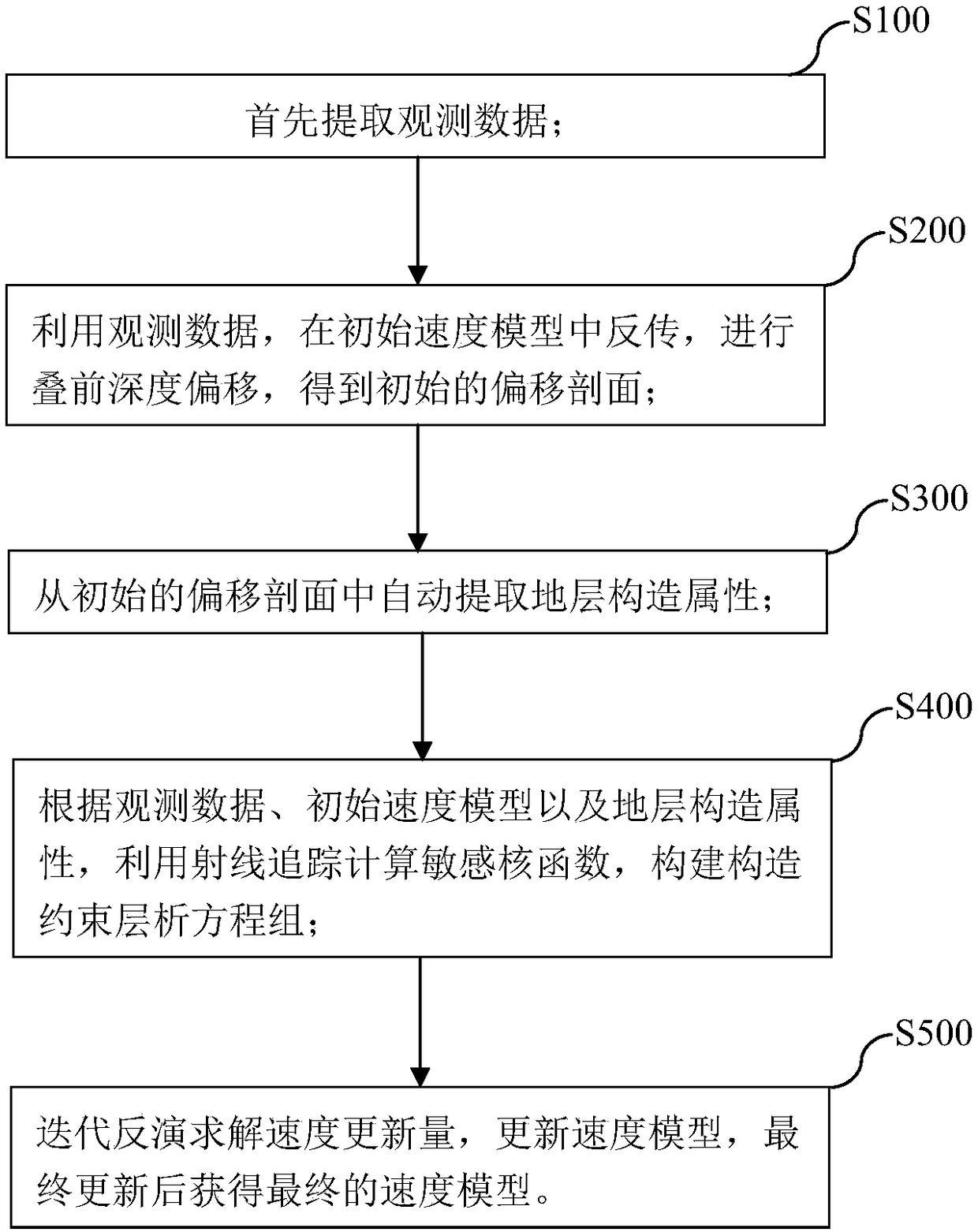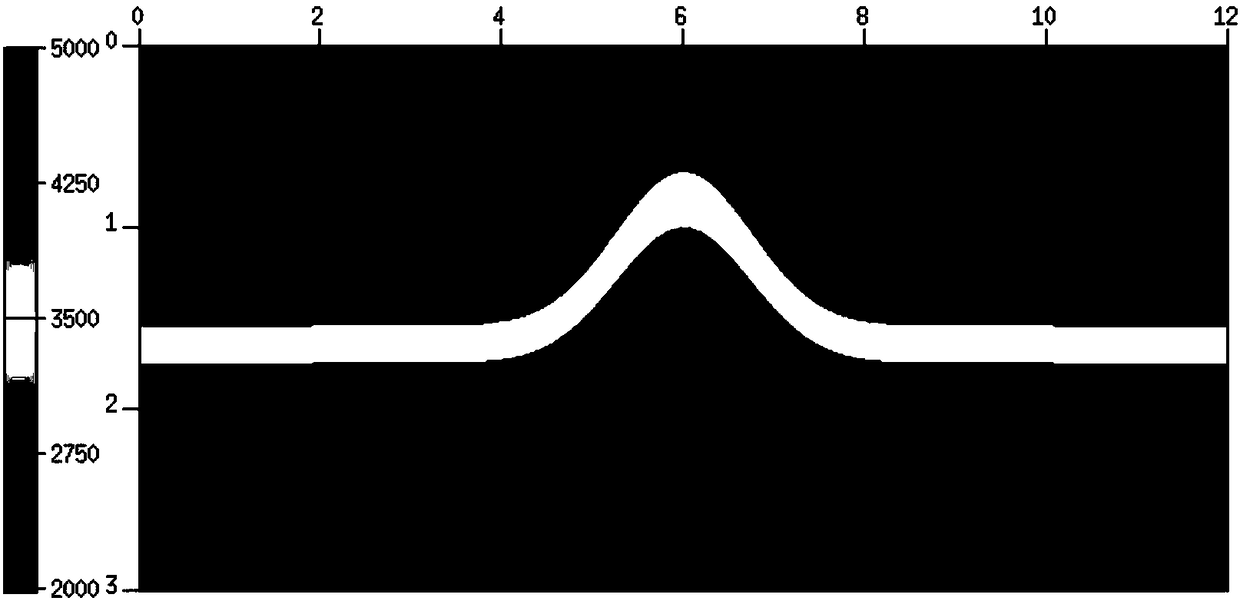Automatic geological construction constraint chromatography inversion method
A technology of geological structure and constrained layers, applied in seismology, geophysical measurement, seismic signal processing, etc., can solve the problems of not meeting the requirements of exploration and development efficiency, time-consuming and labor-intensive, etc., to reduce manual workload and shorten processing Cycle, the effect of improving efficiency
- Summary
- Abstract
- Description
- Claims
- Application Information
AI Technical Summary
Problems solved by technology
Method used
Image
Examples
Embodiment 1
[0053] Such as figure 1Shown is the flowchart of the automatic geological structure constrained tomographic inversion method in this embodiment, the automatic geological structure constrained tomographic inversion method in this embodiment includes the following steps:
[0054] S100: first extract observation data;
[0055] S200: Using the observation data, back-transmitting in the initial velocity model, performing pre-stack depth migration, and obtaining the initial migration profile;
[0056] S300: Automatically extract stratum structure attributes from the initial migration profile;
[0057] S400: According to the observation data, the initial velocity model, and the stratum structure attributes, use ray tracing to calculate the sensitive kernel function, and construct the structure-constrained tomographic equations;
[0058] S500: Iterative inversion to solve the velocity update amount, update the velocity model, and finally obtain the final velocity model after the upd...
Embodiment 2
[0085] In this embodiment, the feasibility and effectiveness of geological structure constraints are verified through the multi-layer anticline theoretical model test. First select a theoretical model, such as figure 2 It is a theoretical velocity model. The anticline is developed in this model, and the apex of the anticline has the characteristics of more reflective layers and larger longitudinal velocity changes. The horizontal and vertical grid numbers of the model are 1201 and 601, respectively, and the horizontal and vertical grid spacings are 10m and 5m, respectively. image 3 For the smoothed theoretical velocity model, combined with image 3 Forward modeling with the Gaussian beam to obtain the reflection data, that is, Figure 4 The profile of the forward modeling seismic record shown will be Figure 4 as observation data.
[0086] first use Figure 4 The observed data shown are backpropagated in the initial velocity model as Figure 5 The section diagram of th...
PUM
 Login to View More
Login to View More Abstract
Description
Claims
Application Information
 Login to View More
Login to View More - R&D
- Intellectual Property
- Life Sciences
- Materials
- Tech Scout
- Unparalleled Data Quality
- Higher Quality Content
- 60% Fewer Hallucinations
Browse by: Latest US Patents, China's latest patents, Technical Efficacy Thesaurus, Application Domain, Technology Topic, Popular Technical Reports.
© 2025 PatSnap. All rights reserved.Legal|Privacy policy|Modern Slavery Act Transparency Statement|Sitemap|About US| Contact US: help@patsnap.com



